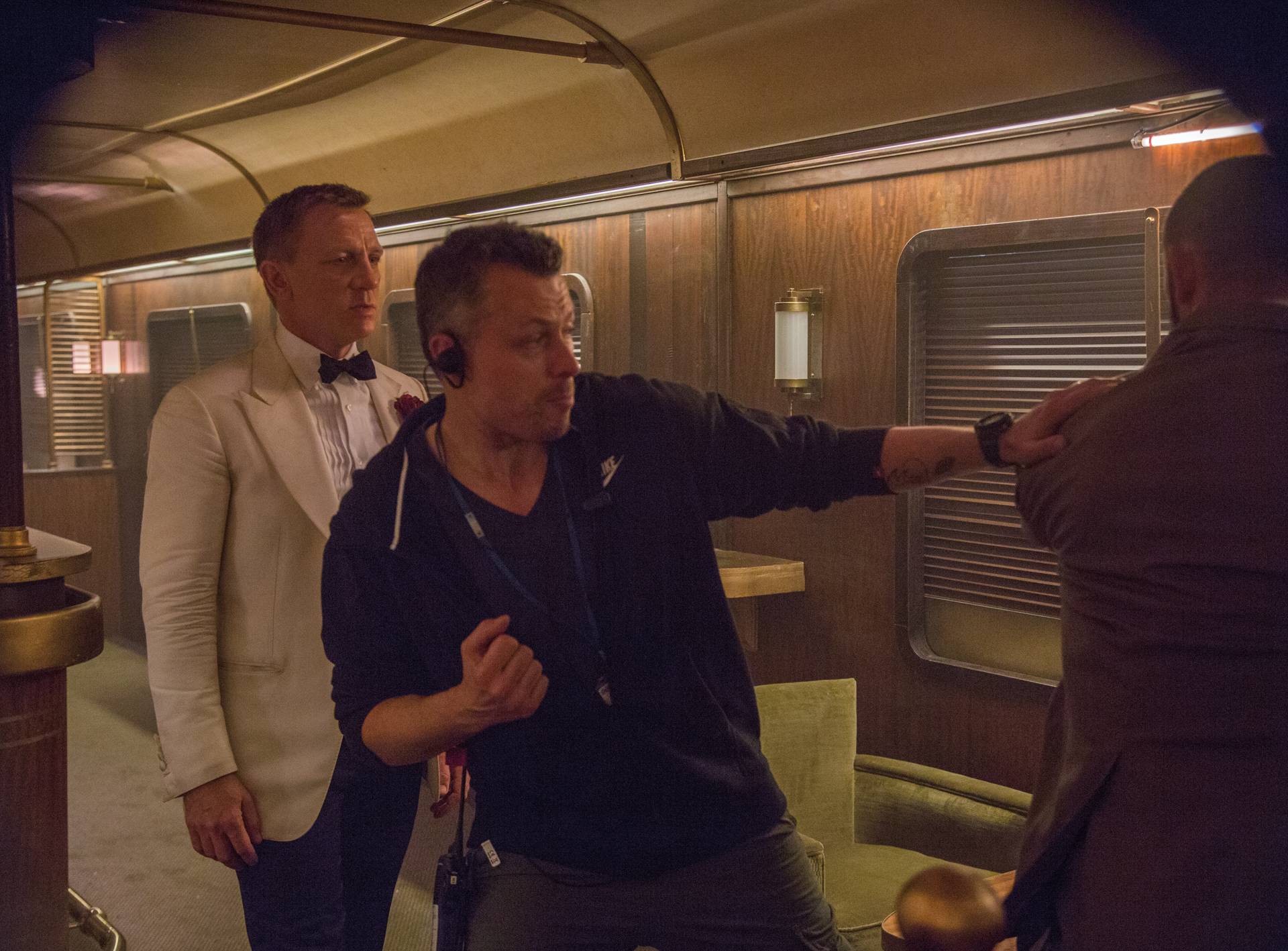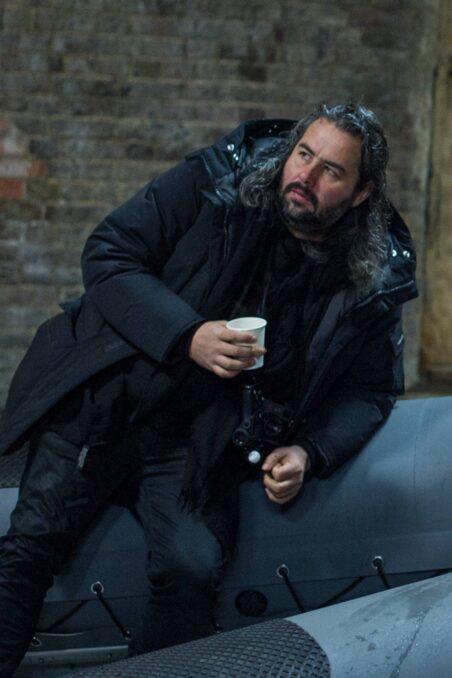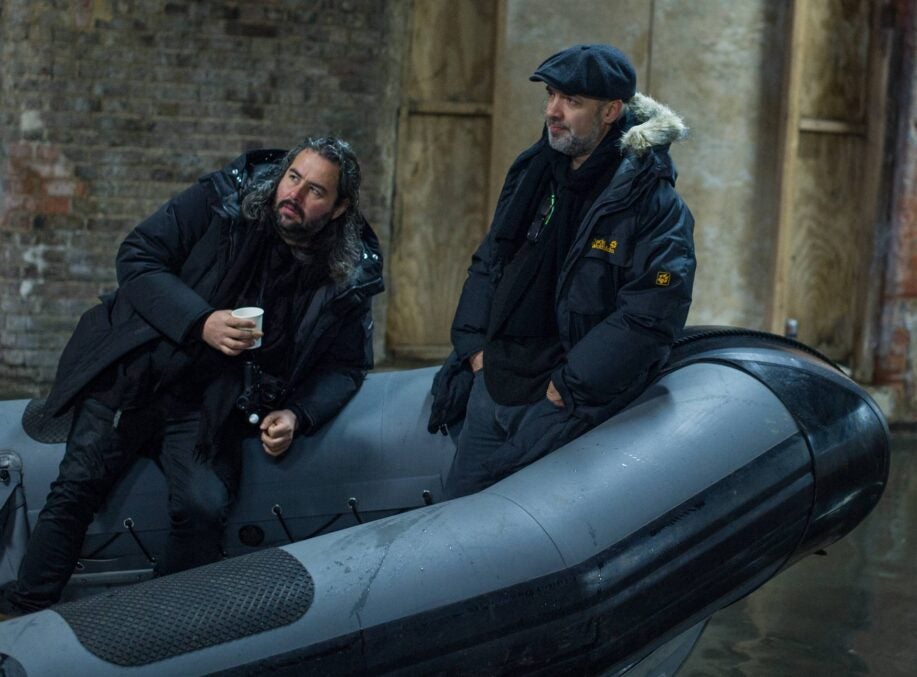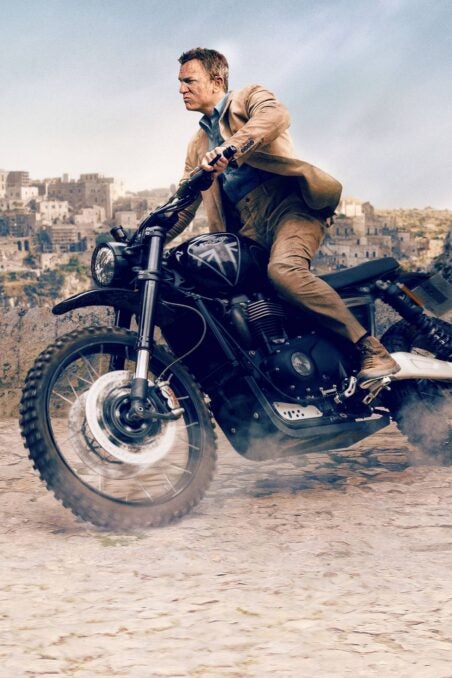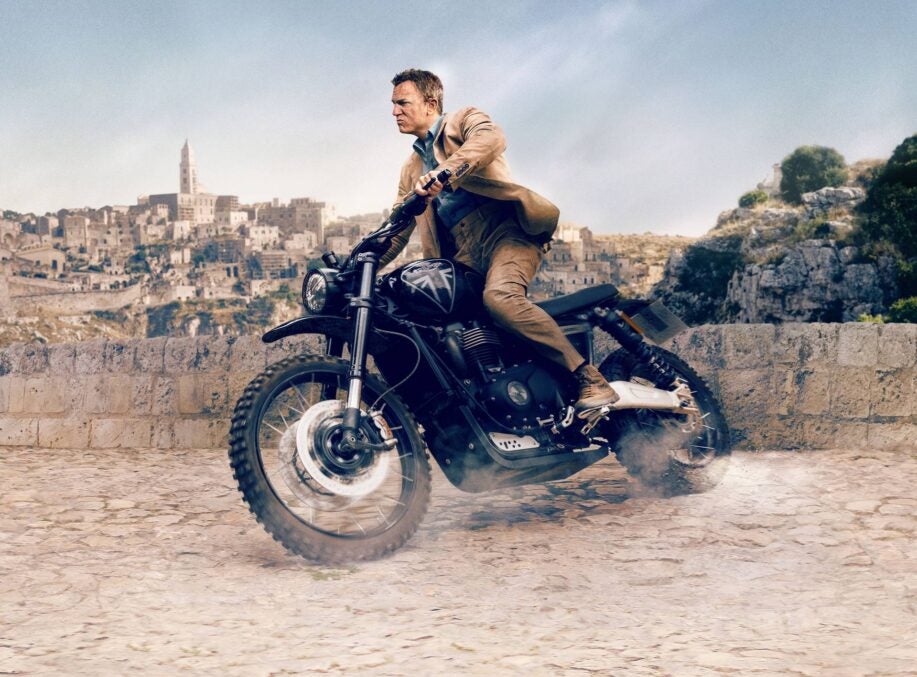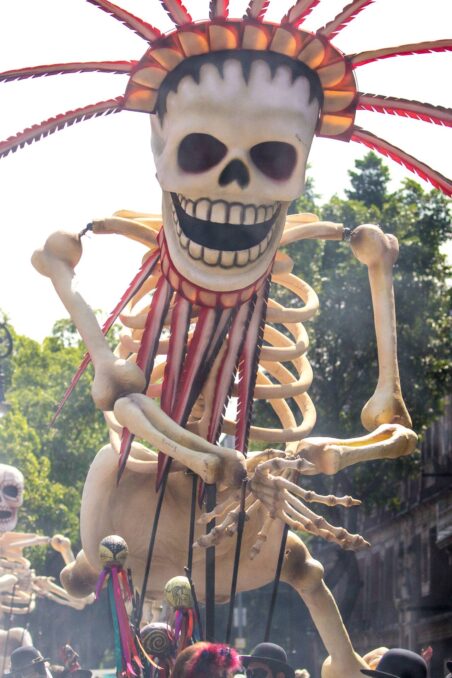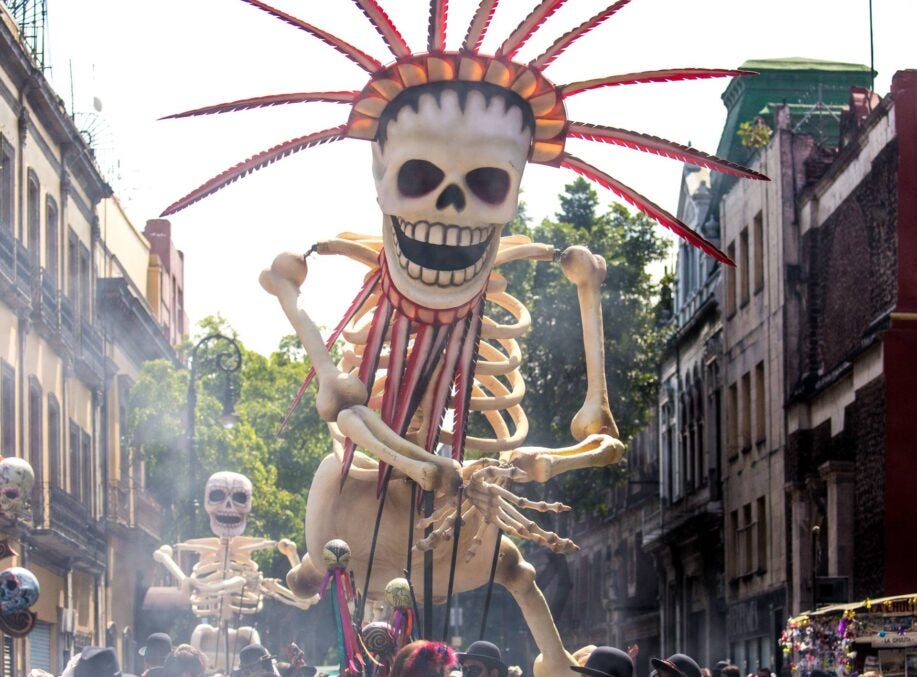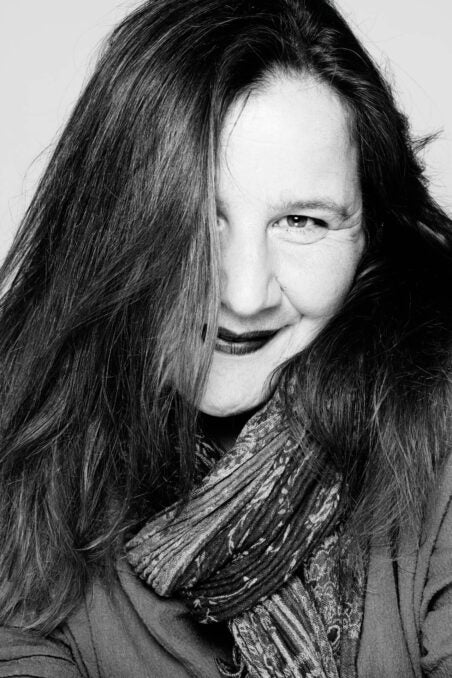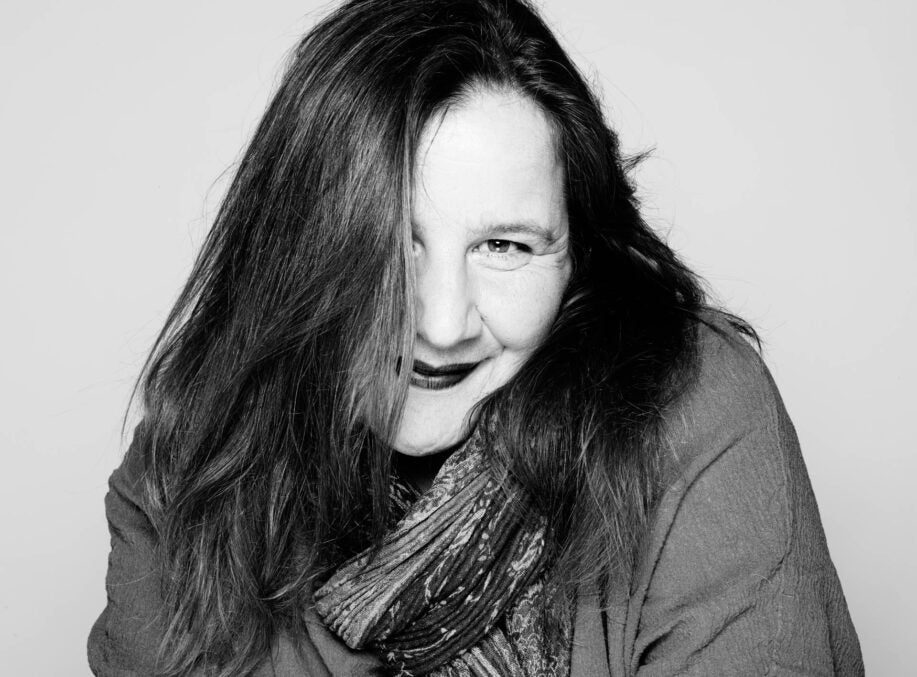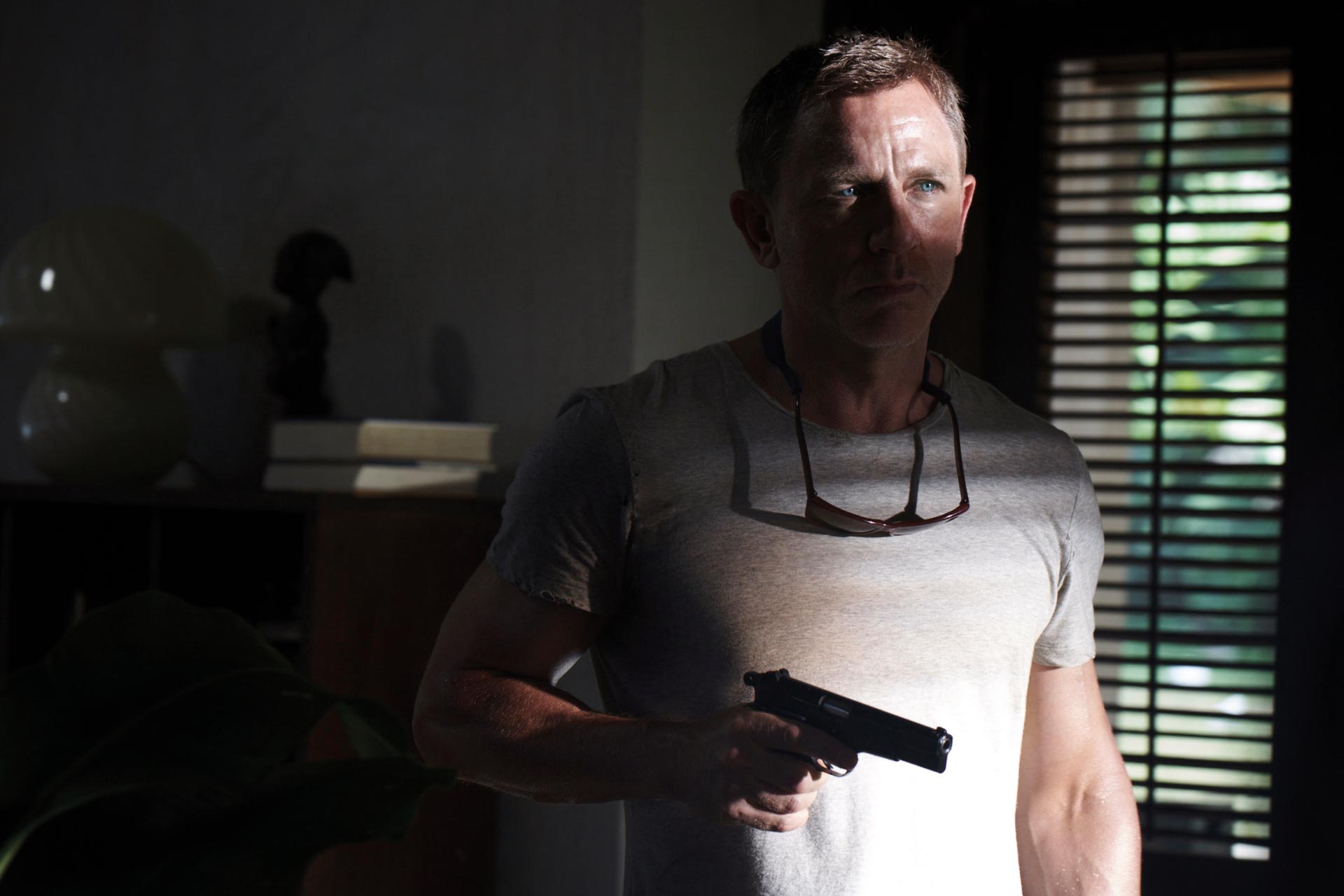In Conversation With Olivier Schneider
On set action with Daniel Craig in Spectre and No Time To Die
“What I love about James Bond is that he is a superhuman, not a superhero,” says Olivier Schneider, fight coordinator on Spectre and stunt coordinator on No Time To Die.
Aged just 10, Schneider was inspired to go into stunt work by watching Jean-Paul Belmondo and Jean-Claude Van Damme and the 007 movies. Rehearsing action scenes in his bedroom – “unfortunately for my parents” – Schneider took up martial arts training and later acting lessons before being taken under the wing of French stunt coordinator Philippe Guégan.
Getting his big break on Liam Neeson thriller Taken, it led to a career working in the USA on Safe House, Child 44 and Fast And The Furious 6. On Safe House, Schneider met Greg Powell, the brother of 007 stunt maestro Gary Powell who was looking for a fight coordinator on Spectre.
Here, Schneider reveals Bond’s stunt philosophy, the biggest set-pieces of his 007 career, plus the challenge of keeping up with Daniel Craig.
How would you describe Bond’s fighting style?
Since Daniel Craig and Casino Royale, the franchise wanted to have something more realistic and brutal, closer to what you see in a real fight with a character who’s supposed to be trained to kill. We tried to preserve the right balance between something spectacular but also as real as possible. On a Bond movie, we always try to do everything for real. It’s not a CG body jumping or falling off a bridge, it’s always a real guy. Daniel was doing his fights for real. If the guy can do it in front of you, you believe in it. My approach was trying to preserve that.
Your first 007 film was Spectre. How did you plan the helicopter fight above Mexico City?
It is probably the most complicated fight I ever had to design because there was no way to rehearse. How do you create a fight in such a little space like a helicopter? We asked for a cage at the right dimensions of the interior of the chopper, and then we started rehearsing in that cage to see what was possible. We rehearsed like that for weeks.
When we were happy with what was happening inside the helicopter, we felt it would be fantastic if something happened on the landing skid of the helicopter, meaning having them both outside. I designed them fighting on the skid of a helicopter. We started to rehearse that on a piece of wood attached to the cage.
What are your memories of shooting that sequence?
It was spectacular. We had two or three days. We had the whole of the square in Mexico City just for us with 1,500-2,000 extras, all of them were dressed up and in Day of the Dead make-up. It was insane to see. We shot the fight in many different ways but part of it was shot over Mexico City in the air for real. It’s very rewarding when you see that. It’s so insane to see two guys fighting in the air on a helicopter.
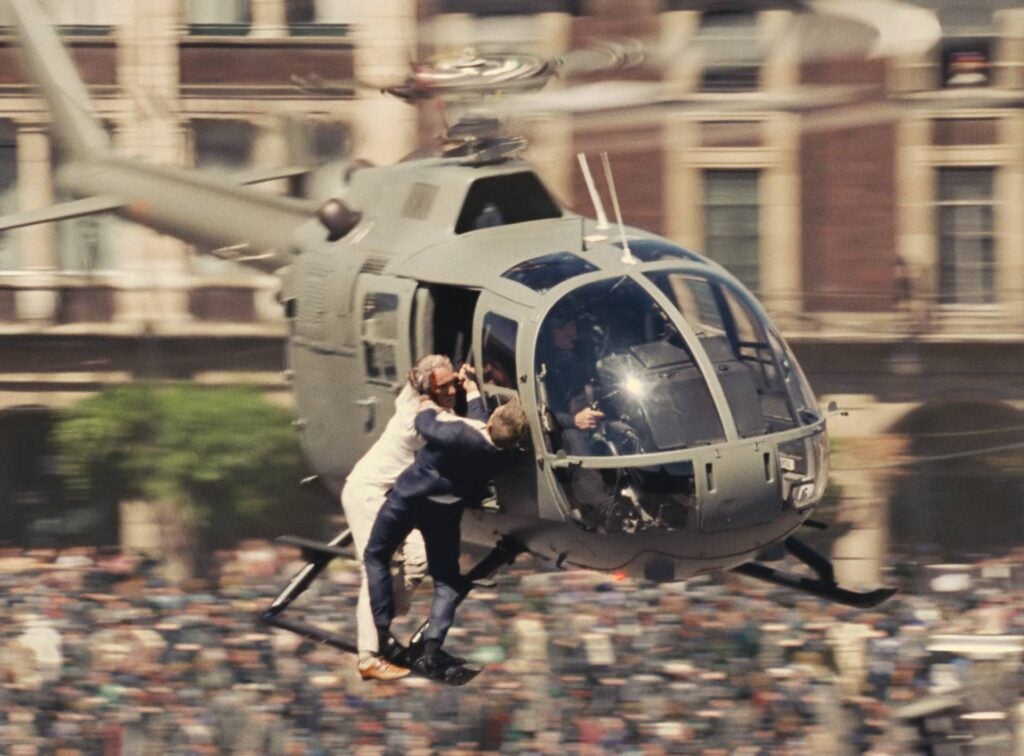
What did you want from the train fight scene between Bond and Hinx?
We talked many times with Daniel and Sam [Mendes, director] about this fight to try to find something unique and different. The basic concept was for the fight to start at a restaurant and then go through the other carriages. I remember we called that fight ‘the tornado fight’ because it was basically like a tornado, these two guys moving forward as everything behind them was completely destroyed. It took maybe six or seven days to shoot.
How was working with Dave Bautista who played Hinx?
He is very impressive because he’s very powerful. Dave knows how to fight. It was very rare to see a guy as big as he is moving as fast as he moves. Even Daniel was surprised because you would imagine a guy like him is going to be a little bit slow because he’s big but not at all — he’s very explosive. Dave has a good memory and he was very cautious. It was a pleasure to work with him. Daniel and Dave really enjoyed working together. They could really play and feel free to move because they trusted each other.
What do you recall as the other big challenges on Spectre?
The scenes in the desert. It was just a shoot-out but we had massive explosions around us, a lot of fire and also the temperature. Because we shot in Morocco, the temperature was 50°C at 10am until 5pm. The stunt guys were wearing gel pads and the pads melted on them because it was too warm. Some of them got burned. And we stayed there for a week. That was very challenging to do.
How was it approaching No Time To Die knowing it was Daniel Craig’s last Bond film?
It’s a weird feeling when you know this is going to be the last time he’s going to put the suit on as James Bond. For me, it was my second film with him but for a lot of the crew, they were there since Casino Royale. Daniel is someone you really enjoy working with. We were sad but we also wanted to pull this off and do something really unique for the last one. It was very important for all of us.
And you worked with Ana de Armas on the Cuba sequence, what was that like?
Ana loved it but she made our life very difficult for two reasons. She wanted to wear a beautiful dress and she wanted to do it in high heels, which, for us, is a nightmare. I understood she wanted that because it’s her character Paloma and looks fantastic on the screen.
But for Patrick [Vo], the fight coordinator and myself, it was a nightmare because she could break her ankle at any moment in high heels. And, because of the dress, I couldn’t put any pads on her because she had bare legs. We had to design a fight around all of that. Ana rehearsed very hard to make that happen. It was a pure pleasure doing it.
Lashana Lynch played the new 007. Did that up the ante on her action sequences?
On a movie like this there is some competition because they know Daniel is gonna go at 100%. Everyone around Daniel who is doing action knows they can’t afford to go under 100%. They know they have to work hard. And this was the first time we were seeing a different 007 on screen too. Lashana kept saying, “Give me more. I need to spend a lot of time with you guys because I love it and I want to give it my best shot.” It added something unique in many ways. She was fantastic.
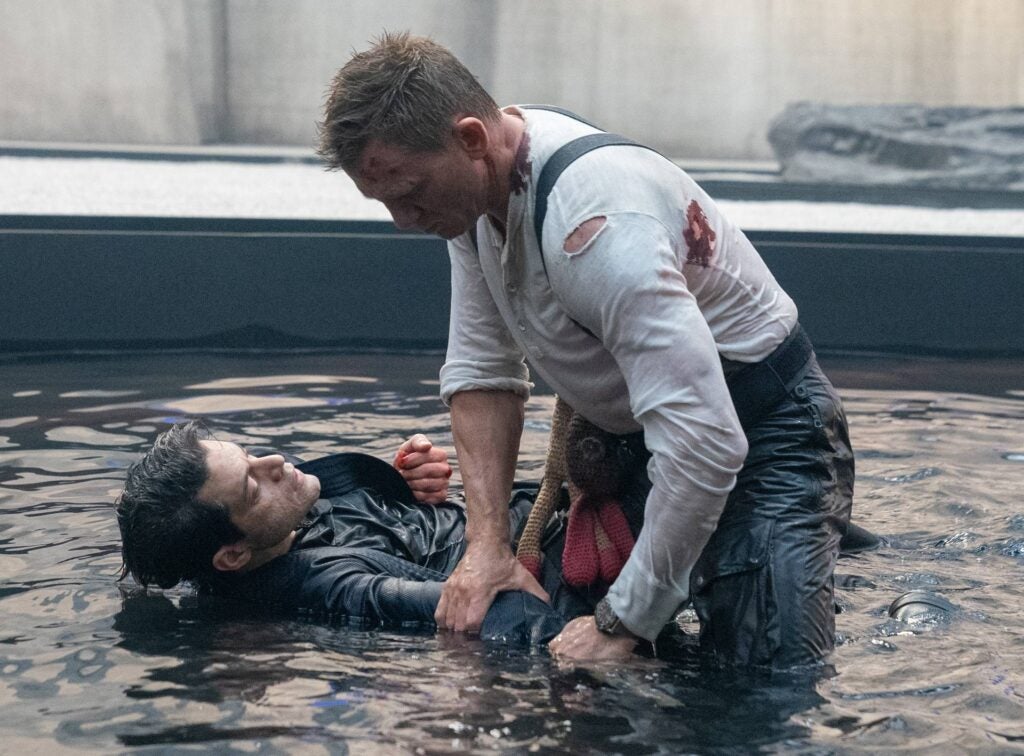
How did you plan Bond infiltrating Safin’s hideout?
It was the last four weeks of shooting before we finished. I used to go to the editing room and seeing all the action together, I thought we were missing something. We were missing a heroic Bond moment. Barbara [Broccoli, producer] asked me if I had something in mind. I said, “Daniel climbing up the stairs fighting with 12 to 15 guys – and do that in one shot.” And I remember Barbara, looked at me and said, “Are you out of your mind?”
We had a very short amount of time to prepare. Barbara and Daniel loved the idea. It’s not a real oner [a continuous take] but we wanted to give the feeling of a oner. We wanted the audience to be next to Daniel all the way through to the end, feeling what he feels, seeing him get hit and injured, and be tired at the very end of his journey. So when he’s coming up to the roof, and we have this moment on his face, he finds peace. I think we needed a moment like that with him.
How did you conceive the final showdown with Safin [Rami Malek], where Bond is wounded but breaks Safin’s arm? It’s very intimate.
We had a couple of moves planned but it was Daniel who said, ‘I think it would be better if we do this’ [breaking the arm] because it tells a story. He was right. We didn’t need more. At that part of the film, we had already had plenty of fight sequences. It was not about having a big fight between them. It was about manipulation. It was about power. That’s something you can have watching their eyes. So that image of him taking his arm and breaking it, I think, is much stronger than a couple of punches and a guy getting thrown from a window.
What was your experience working with Daniel on Spectre and No Time To Die?
Daniel is just amazing. He is the actor who impressed me the most in terms of energy and intensity, because he does everything at 100%. He is not trying to preserve himself, he is giving everything. He wants to really feel the fight. He learns very quickly. Daniel is that kind of actor you have to sometimes tell him, “No, you can do that” because he wants to go all the time. He’s fantastic. It’s a real pleasure working with him.
Finally, how would you sum up your adventures with James Bond?
A dream. I remember I was maybe 10 years old and my father bought me the DB5 as a toy with the guy jumping out of the roof when you press the bottom of the side of the car. I remember playing many, many times with that car. And then forty years later, I see that car for real. I can sit in it on set with the proper James Bond. That was amazing.
